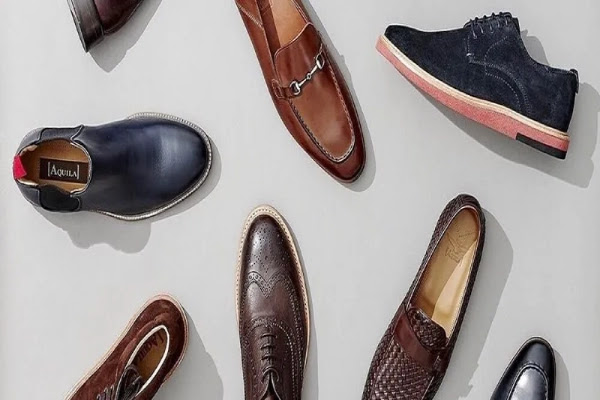INSPIRATION FROM LAKME FASHION WEEK
Drawing inspiration from Lakme Fashion Week, you can incorporate elements of Indian fashion into your wardrobe while also staying on-trend. Here are some fashion ideas:
Traditional Attire: Embrace the elegance of Indian
traditional wear. Opt for sarees, lehengas, or anarkalis. You can experiment
with different fabrics, colors, and embellishments to suit your personal style.
Fusion Fashion: Blend Indian and Western styles for a unique
look. Pair a traditional kurta with jeans or leggings, or wear a crop top with
a long ethnic skirt. Mixing and matching can create a trendy fusion ensemble.
Bold Colors: Indian fashion is known for its vibrant color
palette. Incorporate bold and bright colors like royal blue, deep red, and
emerald green into your outfits. Don't be afraid to experiment with color
combinations.
Statement Accessories: Accessorize your outfit with
statement jewelry, such as oversized earrings, jhumkas, or intricate necklaces.
Pay attention to details like bangles, bindis, and handbags to complete the
look.
Embroidery and Embellishments: Look for clothing with
intricate embroidery, mirror work, or sequins. These details add a touch of
glamour and are often seen on Lakme Fashion Week runways.
Prints and Patterns: Indian fashion often features intricate
prints like paisley, floral, or geometric patterns. Incorporate these prints
into your clothing, whether it's a printed blouse, scarf, or even pants.
Fabrics: Choose fabrics like silk, chiffon, georgette, or
brocade for a luxurious feel. These fabrics drape beautifully and can add a
touch of elegance to your outfits.
Footwear: Complete your look with Indian footwear such as
juttis or mojris, which are intricately designed traditional shoes. They can
add a touch of authenticity to your ensemble.
Hairstyles: Experiment with Indian-inspired hairstyles. Try
braids, buns, or loose waves adorned with hairpins, flowers, or decorative hair
accessories.
Makeup: Indian makeup often features bold eyes, statement
lips, and beautifully contoured faces. You can experiment with bold eyeliners,
bright lip colors, and shimmery eyeshadows.
Remember that fshion is all about expressing your unique
style and personality, so feel free to mix and match these elements from Lakme Fashion Week to create a look that resonates with you. Don't forget to stay
updated with the latest fashion trends to keep your style fresh and exciting.
Traditional Attire
Traditional attire varies greatly depending on the culture
and region you're interested in. Here are some traditional attire options from
different parts of the world:
Indian Saree: The saree is a traditional Indian outfit that
consists of a long piece of fabric draped elegantly around the body. It comes
in a wide range of fabrics, colors, and designs, making it suitable for various
occasions.
Japanese Kimono: Kimonos are traditional Japanese garments
known for their graceful and intricate designs. They are often worn on special
occasions, and the style and color can vary depending on the event and the
wearer's age.
Chinese Qipao (Cheongsam): The qipao is a traditional
Chinese dress for women characterized by its high collar, form-fitting shape,
and beautiful silk fabrics. It's often worn for weddings and other formal
events.
Scottish Kilt: The kilt is a traditional Scottish garment
typically worn by men. It's a pleated skirt made of tartan fabric and is often
worn with other traditional Scottish accessories, such as a sporran and a
sgian-dubh (a small knife).
African Dashiki: The dashiki is a colorful and loose-fitting
shirt or tunic often worn by people in West Africa. It features intricate
patterns and is a symbol of African heritage and culture.
Mexican Mariachi Attire: Mariachi bands in Mexico are known
for their traditional attire, which includes wide-brimmed hats, embroidered
jackets, and pants with intricate detailing. The attire is vibrant and
eye-catching.
Middle Eastern Abaya: The abaya is a long, flowing robe worn
by women in many Middle Eastern countries. It is often paired with a headscarf
called a hijab for modesty.
Native American Regalia: Indigenous people in North America
have their own unique traditional attire, often referred to as regalia. These
outfits are adorned with meaningful symbols and are worn during ceremonies and
dances.
German Dirndl and Lederhosen: In Germany, traditional attire
includes the dirndl for women and lederhosen for men. Dirndls are dresses with
aprons, while lederhosen are leather shorts with suspenders. They are commonly
worn during Oktoberfest and other cultural events.
Korean Hanbok: The hanbok is the traditional Korean attire,
known for its vibrant colors and simple yet elegant design. It consists of a
jeogori (jacket) and chima (skirt) for women and a jeogori and baji (pants) for
men.
These are just a few examples of traditional attire from
around the world. When choosing traditional attire, it's important to respect
the cultural significance and history behind the clothing, and consider wearing
it in appropriate contexts and with cultural sensitivity.
Fusion Fashion
Fusion fashion is all about blending elements from different
cultural, regional, or stylistic backgrounds to create a unique and
contemporary look. It allows you to experiment with mixing and matching
clothing, accessories, and styles from various traditions and eras. Here are
some tips and ideas for embracing fusion fashion:
East Meets West: Combine elements of Eastern and Western
fashion to create a striking fusion. For example, pair a traditional Indian
kurta with jeans and sneakers or wear a kimono-inspired jacket with a simple
white t-shirt and jeans.
Cultural Prints and Patterns: Incorporate prints and
patterns from different cultures into your outfit. For instance, wear a skirt
with African wax print fabric paired with a Western-style blouse.
Mix Traditional and Modern Silhouettes: Experiment with
traditional garments like sarees, kimonos, or caftans but in contemporary cuts
and fabrics. This can give a fresh and trendy twist to classic pieces.
Accessorize Creatively: Use accessories to add a fusion
element to your outfit. Combine traditional jewelry with modern clothing or
vice versa. A chunky tribal necklace can look fabulous with a simple white
dress.
Footwear: Play around with footwear choices. Traditional
shoes like juttis or moccasins can be worn with jeans or dresses for a fusion
look
Layering: Layering is a great technique for fusion fashion.
Try layering a traditional vest over a modern shirt or wearing a kimono as a
lightweight jacket over a simple tank top and shorts.
Color Combinations: Experiment with color combinations that
are not commonly seen in traditional or Western fashion. Mixing vibrant colors
and bold shades can create an eye-catching fusion ensemble.
Cultural Accessories: Incorporate cultural accessories such
as turbans, headscarves, or decorative belts to add a unique flair to your
outfit.
Textile Mixing: Blend fabrics from different cultures. For
example, pair a silk Chinese-style top with denim or a Moroccan-inspired
embroidered jacket with a pencil skirt.
Personalize Your Fusion: The key to fusion fashion is
personalization. Make it your own by mixing and matching pieces that resonate
with your style and cultural preferences.
Respect Cultural Sensitivities: While experimenting with
fusion fashion, it's essential to be respectful of the cultural significance of
the clothing and accessories you're incorporating. Avoid cultural appropriation
and make sure you understand the context and history behind the items you wear.
Remember that fusion fashion is a creative and exciting way to express your style, break boundaries, and celebrate diversity. It allows you to showcase your appreciation for various cultures while maintaining your unique identity.


